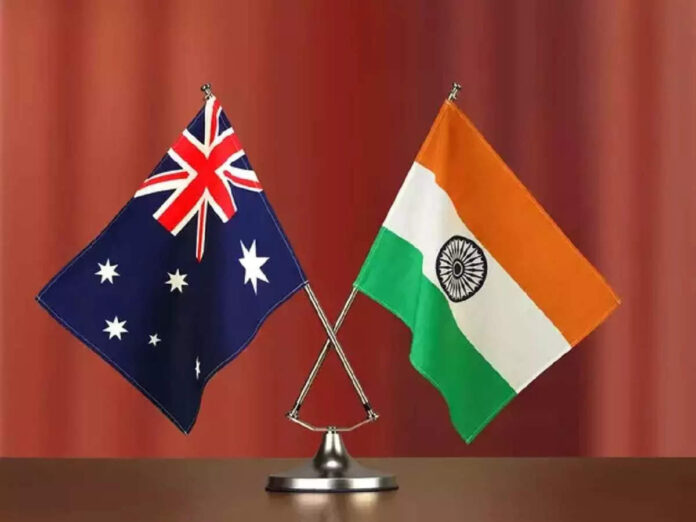The free trade agreement between India and Australia came into force on December 29. Its aim is to almost double bilateral commerce to USD 45-50 billion in around five years. Australian Minister for Trade and Tourism Don Farrell states that the Indian Government has completed its domestic requirements for implementing the Australia-India Economic Cooperation and Trade Agreement (ECTA).
Commerce and Industry Minister Piyush Goyal emphasizes that the implementation of the free trade pact “is the dawn of a whole new era.”India and Australia strengthened their partnership with the Economic Cooperation and Trade Agreement, which is guided by the leaders of both nations and became effective on December 29, 2022. “It is the start of a new era for our businesses and people,” Goyal stated in a tweet.
The deal, endorsed on April 2, grants duty-free entry to Indian exporters in over 6,000 sectors, including textiles, leather, furniture, jewellery, and machinery, in the Australian market. Labor-intensive industries also benefit textiles, apparel, select agricultural and fish products, leather goods, footwear, furniture, sports equipment, jewelry, machinery, and electrical items.
Australia provides India with duty-free access for around 96.4% of exports (by value) right from the beginning, encompassing numerous products currently subject to 4-5% customs duty in Australia.
In the fiscal year 2021-22, India exported goods worth USD 8.3 billion to Australia, while imports from Australia totaled USD 16.75 billion.
Starting from December 29, tariffs on 85% of Australia’s exports to India will be removed, with high tariffs on an additional 5% of goods gradually decreasing. The agreement’s early enforcement before the New Year brings a double benefit of two tariff reductions in quick succession: one upon implementation and another on January 1, 2023.
ECTA is anticipated to result in approximately USD 2 billion in annual savings for Australian exporters in tariffs. Additionally, consumers and businesses are expected to save about USD 500 million in tariffs on imported finished goods and manufacturing inputs.
Under the agreement, India’s tariff commitments grant Australian exporters access to critical minerals, pharmaceuticals, cosmetics, lentils, seafood, sheepmeat, horticulture, and wine markets. Australian service providers enjoy full or partial access to over 85 Indian service sectors and subsectors. Across 31 sectors, Australian suppliers receive the same top-level treatment as any free trade agreement partner of India.
The ECTA also facilitates tourism and workforce requirements in regional Australia by offering 1,000 work and holiday program positions to young Indians. Furthermore, the agreement ensures that Indian students who graduate in Australia can pursue post-study work, with an additional year granted to high-achieving STEM graduates.
Australia and India are now working on advancing a Comprehensive Economic Cooperation Agreement beyond the ECTA. The Australian Government is exploring further opportunities in goods and services, along with new commitments in digital trade, government procurement, and other collaborative areas.
Australian Prime Minister Anthony Albanese highlighted that “the deal marks a significant advancement in strengthening ties with India, the world’s fastest expanding major economy.”
Minister for Trade and Tourism Don Farrell emphasised that “the consecutive tariff reductions in the ECTA enhance the immediate advantages for exporters.”
He urged businesses to proactively prepare for enhanced market access to India under the new agreement and recommended leveraging Austrade’s support to capitalize on the reduced trade barriers in the Indian market.



















































